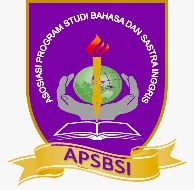MODULATION IN INDONESIAN TRANSLATION OF NATIONAL GEOGRAPHIC ARTICLES
(A Descriptive Qualitative Study)
Abstract
This study investigates the types of modulation which were used on the translation
process of National Geographic Magazine of June 2014 both on USA and
Indonesian issue. The purposes of this study areto describe the use of modulation in
translating “National Geographic†from English to Indonesian and to describe the
maintenance of the source target meaning in the target text. The qualitative
approach was used to describe the quantitative data which was got from the
analysis. The data of this study was collected using reading and inventorying stages
and analyzed using comparing, identifying, and evaluating process. The collected
data then was analyzed to investigate the modulation‟s impact on message
maintenance. Based on those analyses, substitution has the highest rank of
modulation type used on the magazine‟s articles (37.8% of total 111 data) followed
by reversal (34.2%), deviation (14.4%), specification (8.1%), and generalization
(5.4%) sequentially. This result is linear to the maintenance of message rating which
was taken from five English Department lecturer raters. It shows that the highest
number of score 3 (well delivered) percentage ratio is obtained by specification
(75.5%) followed by reversal (72.6%), deviation (72.5%), substitution (71.2%) and
generalization (60%). From the result above it can be seen that the more frequent
occurrence does not always mean to be so effective compared to the less frequent
one. The highest percentage of successful maintenance was obtained by
specification, which is on 4th rank on the frequency of occurrence table. The most
frequent type of modulation, substitution, only settles on 4th rank on the table of
score 3. On the other hand, the most distorted type of modulation is gotten by
reversal with 9.5% on score 1, while the least distorted one is gotten by
generalization.



_.jpg)
_.jpg)




